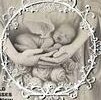Dalam dunia perjudian online, situs togel Uni4D telah muncul sebagai salah satu platform yang menarik perhatian banyak penggemar. Dengan berbagai fitur canggih dan kemudahan akses, Uni4D menyediakan pengalaman bermain yang memuaskan bagi para pemain. Dalam artikel ini, kita akan membedah fitur-fitur menarik dari situs Uni4D, serta manfaat yang bisa didapatkan oleh para pengguna. Uni4D menawarkan berbagai kemudahan, mulai dari proses pendaftaran yang simpel melalui link Uni4D, hingga sistem login yang aman dan cepat. Tidak hanya itu, situs resmi Uni4D juga dikenal sebagai salah satu situs togel online terlengkap, memberikan berbagai pilihan permainan kepada para pengguna. Mari kita telusuri lebih dalam apa yang membuat situs togel Uni4D ini begitu istimewa dan mengapa semakin banyak orang memilihnya sebagai tempat bermain mereka. Apa Itu Situs Togel Uni4D? Situs Togel Uni4D adalah platform online yang menyediakan layanan permainan togel bagi para penggemar judi. Dengan tampilan yang user-friendly, situs ini memudahkan pengguna untuk melakukan taruhan pada berbagai jenis permainan togel yang tersedia. Uni4D dikenal atas keandalannya dan reputasinya yang baik dalam industri perjudian online. Pengguna dapat dengan mudah mengakses situs Uni4D melalui berbagai perangkat, baik itu komputer maupun smartphone. Proses pendaftaran di situs ini juga relatif sederhana dan cepat. Setelah melakukan daftar uni4d, pengguna akan mendapatkan akses ke berbagai fitur menarik yang ditawarkan oleh situs resmi uni4d, seperti promo dan bonus yang bisa dimanfaatkan untuk meningkatkan pengalaman bermain. Situs togel Uni4D menawarkan togel online terlengkap dengan berbagai pilihan pasaran, yang membuat penggunanya selalu memiliki banyak opsi. Keberadaan link uni4d memudahkan anggota untuk mengakses situs kapan saja tanpa kendala. Uni4D juga menerapkan sistem keamanan yang ketat untuk melindungi data pribadi anggotanya, menjadikannya sebagai pilihan yang aman untuk bermain togel online. Fitur Utama Uni4D Uni4D menawarkan berbagai fitur unggulan yang membuatnya menjadi salah satu situs togel online terlengkap di Indonesia. Salah satu fitur utama adalah pilihan permainan yang beragam, termasuk berbagai jenis taruhan dan angka yang dapat dipilih oleh pemain. Hal ini memberikan fleksibilitas kepada pengguna untuk memilih permainan yang sesuai dengan preferensi mereka, serta meningkatkan peluang untuk memenangkan hadiah besar. Selain itu, situs resmi Uni4D menyediakan antarmuka yang user-friendly, sehingga memudahkan pengguna dalam melakukan proses pendaftaran atau login. Dengan link Uni4D yang selalu diperbarui, pemain dapat dengan mudah mengakses situs ini dari berbagai perangkat, baik itu komputer maupun smartphone. Ini tentu saja membuat pengalaman bermain semakin menyenangkan dan nyaman di mana saja dan kapan saja. situs uni4d Fitur keamanan juga menjadi prioritas bagi Uni4D, dengan sistem enkripsi yang melindungi data pribadi dan transaksi finansial pengguna. Dengan demikian, pemain dapat merasa aman dan nyaman saat melakukan pendaftaran atau saat berpartisipasi dalam taruhan. Semua fitur ini menjadikan Uni4D sebagai pilihan utama bagi mereka yang mencari situs togel resmi dan terpercaya. Keuntungan Menggunakan Uni4D Menggunakan situs Uni4D memberikan kemudahan akses bagi para penggemar togel online. Dengan sistem yang user-friendly, pengguna dapat dengan mudah melakukan pendaftaran melalui daftar Uni4D dan melakukan login untuk memulai permainan. Selain itu, link Uni4D yang selalu tersedia memastikan bahwa pengguna tidak akan kesulitan dalam mengakses situs resmi Uni4D. Hal ini membuat pengalaman bermain menjadi lebih lancar dan menyenangkan. Salah satu keuntungan utama dari Uni4D adalah variasi permainan togel yang ditawarkan. Sebagai situs togel Uni4D, platform ini menyediakan berbagai jenis permainan togel online terlengkap, sehingga para pemain tidak akan kehabisan pilihan. Dengan cakupan yang luas, pengguna dapat mencoba berbagai jenis taruhan sesuai dengan preferensi dan strategi masing-masing. Keamanan dan kenyamanan juga merupakan faktor penting dalam memilih situs togel resmi. Uni4D menjamin bahwa semua data dan transaksi pengguna akan terlindungi dengan baik. Dengan menggunakan sistem keamanan yang canggih, Uni4D resmi memberikan rasa aman bagi para penggunanya, sehingga mereka dapat fokus pada permainan tanpa khawatir akan risiko kebocoran informasi pribadi. Cara Daftar dan Login di Uni4D Untuk dapat mengakses situs Uni4D, langkah pertama yang perlu dilakukan adalah melakukan pendaftaran. Anda dapat mengunjungi situs resmi Uni4D dan mencari opsi "Daftar" yang biasanya terletak di bagian atas halaman. Setelah mengklik opsi tersebut, Anda akan diminta untuk mengisi formulir pendaftaran dengan informasi pribadi seperti nama, alamat email, dan nomor telepon. Pastikan semua data yang dimasukkan adalah akurat untuk menghindari masalah di kemudian hari. Setelah menyelesaikan proses pendaftaran, Anda akan menerima email konfirmasi dari Uni4D. Ikuti petunjuk dalam email tersebut untuk mengaktifkan akun Anda. Setelah akun Anda aktif, Anda dapat melanjutkan ke langkah berikutnya, yaitu login. Kembali ke situs Uni4D, cari opsi "Login" dan masukkan informasi yang telah Anda daftarkan sebelumnya, seperti nama pengguna dan kata sandi. Setelah berhasil login, Anda akan diarahkan ke halaman beranda situs Uni4D. Di sini, Anda dapat menemukan berbagai fitur dan layanan yang ditawarkan, termasuk pilihan permainan togel online terlengkap. Pastikan untuk mengeksplorasi semua menu dan fitur yang tersedia agar Anda tidak melewatkan keuntungan dari situs togel resmi ini. Kesimpulan Situs Togel Uni4D menawarkan berbagai keunggulan yang membuatnya menjadi pilihan utama bagi para penggemar togel online. Dengan fasilitas yang lengkap, termasuk pilihan permainan yang beragam dan antarmuka yang mudah digunakan, pengguna dapat menikmati pengalaman bermain yang lebih menyenangkan. Keberadaan link Uni4D yang resmi memastikan akses yang aman dan terpercaya, memberikan kenyamanan bagi para pemain dalam melakukan taruhan. Selain itu, fitur Uni4D login yang cepat dan efektif memungkinkan pengguna untuk mengakses akun mereka dengan mudah. Proses pendaftaran yang sederhana melalui daftar Uni4D memudahkan anggota baru untuk bergabung dan mulai bermain tanpa hambatan. Situs resmi Uni4D selalu memberikan informasi terbaru dan penawaran menarik, menjaga keterlibatan para pelanggannya. Dengan semua fitur yang ditawarkan, situs togel Uni4D tidak hanya menjadi tempat bermain, tetapi juga sebagai komunitas bagi para pencinta togel online. Dengan dukungan layanan pelanggan yang responsif dan jaminan keamanan, Uni4D resmi terus berkomitmen untuk memberikan kualitas terbaik bagi penggunanya. Bergabunglah dan rasakan sendiri manfaat yang ditawarkan oleh situs ini.
